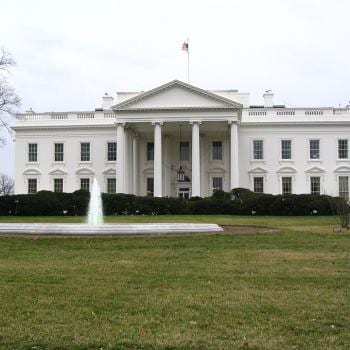I’ve remarked many times that the organized pro-life movement in the United States is strangely silent on the shape of a post-Roe world. Even abstracting from the crucial economic and social conditions that affect abortion, it is clear that unrestricted abortion will remain legal across large areas of the country, especially in major population centers. So, should the pro-life movement be content to let states decide? Should it fight the fight, state by state, legislature by legislature, bill by bill? Some think that all these problems could be brushed away with a constitutional amendment to ban abortion. Even if that garnered enough support to pass (which I don’t think it ever would), this is not necessarily a panacea. Just look at Ireland.
In 1983, Ireland passed a constitutional amendment (Article 40.3.3) that declared the following:
“The State acknowledges the right to life of the unborn and, with due regard to the equal right to life of the mother, guarantees in its laws to respect, and, as far as practicable, by its laws to defend and vindicate that right.”
In 1992, a 14-year old girl who was raped planned on traveling with her family to England to procure an abortion. They contacted the authorities to see if the DNA from the aborted foetus could be used in the rape trial (the alleged rapist was a neighbor who denied the charges). In response, the Attorney General slapped an injunction on the girl preventing her from leaving the jurisdiction, citing Article 20.3.3 of the Constitution. The case went through the judicial system and quickly reached the Supreme Court, which delivered the landmark X Case.
The Supreme Court set aside the injunction. In doing so, it argued that there was a right to abortion in the case of a “real and substantial risk” to the life of the mother. Since the girl’s legal team had argued (with supporting evidence) that she was suicidal, the Court held that risk of suicide was included in the risk to the life of the mother. With one decision, it was now legal not only for Ms. X to travel abroad, but to procure an abortion in Irish territory.
The fallout was immediate. One side claimed that the “risk of suicide” was a ludicrously loose standard that could lead to highly liberal abortion laws. The other side argued that the Supreme Court had spoken, and that its judgment needed to be enshrined immediately in legislation. One side claimed the Supreme Court had overstepped its bounds, and the other laid the blame on the poorly-worded constitutional amendment in the first place. I should mention that the atmosphere had become poisonous, as the pro-life groups had been suing publications that provided information on abortion providers in the UK for years (the main targets were the students unions at the main universities).
The government was in a bind, and its attempts to square the circle pleased no one. It offered up three new constitutional amendments: one would enshrine the right to travel, the second would guarantee freedom of information when it came to providing details of services legally available in other states, and the third dealt with the “substantive issue”. On the latter, the proposed text read as follows:
“It shall be unlawful to terminate the life of an unborn unless such termination is necessary to save the life, as distinct from the health, of the mother where there is an illness or disorder of the mother giving rise to a real and substantial risk to her life, not being a risk of self-destruction.”
The government tried to roll back the liberal interpretation of the Supreme Court by explicitly ruling out suicide as a health risk. At the same time, it explicitly opened the door to legalized abortion in Ireland in the case of a threat to the woman’s life. In any event, the travel and information amendments passed, but the proposal on the abortion issue itself failed. It failed because of an unusual alliance between those who thought it was too liberal, and those who insisted that the Supreme Court’s judgement be reflected in the legislation. Few people occupied the middle ground.
That was in 1992. To this day, the situation is unresolved. Technically, the Supreme Court judgment is the law of the land, but no subsequent government has proposed any further situation. There is a feeling that enough is enough, and that the issue needs to rest. The X Case and its fallout proved incredibly divisive and disruptive. Today, there are no abortion providers in Ireland. And yet, the legal framework remains wholly unsatisfactory. I think the main lesson to draw from the Irish experience is that constitutional amendments may not solve the problem in the manner some might hope for.











